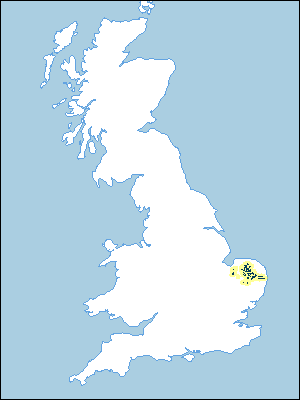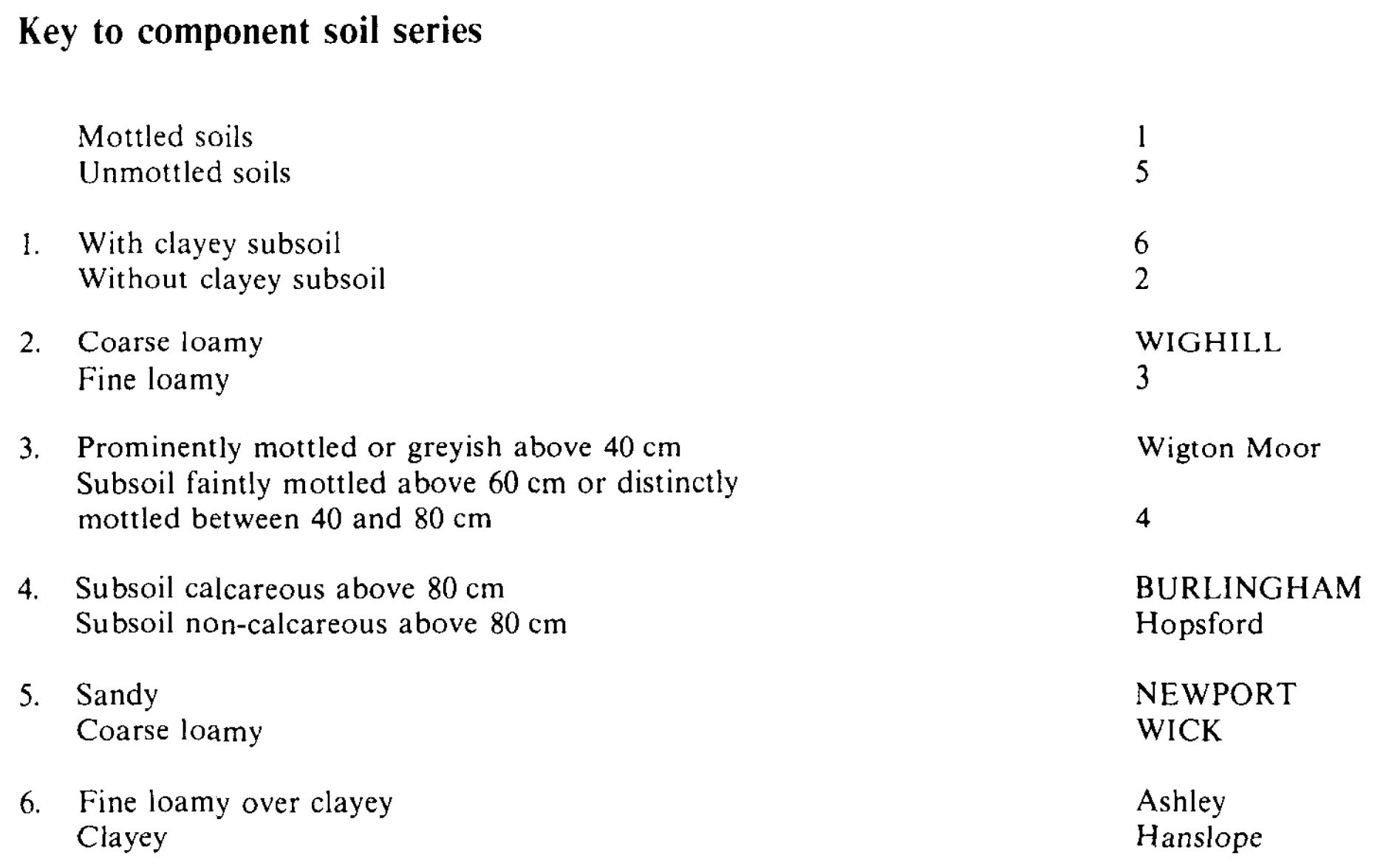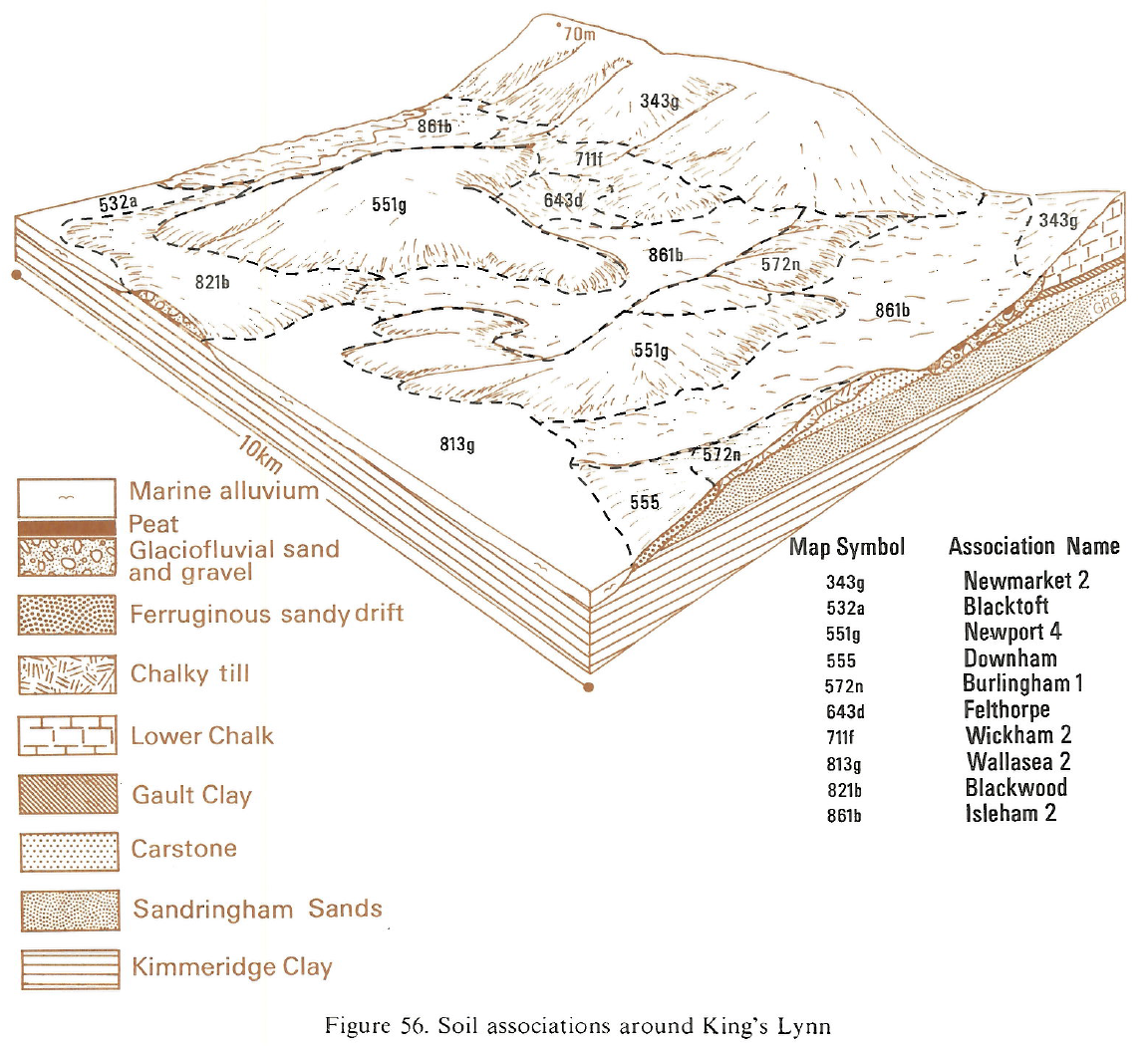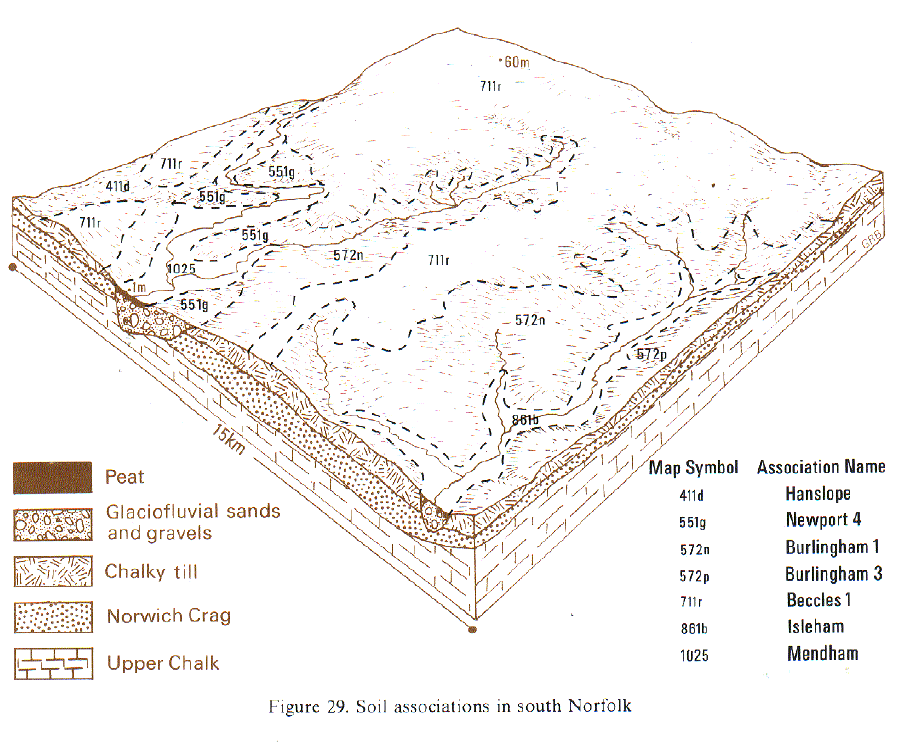
Soil Associations
0572n BURLINGHAM 1
Soil and site characteristics
Deep coarse and fine loamy soils with slowly permeable subsoils and slight seasonal waterlogging. Some deep well drained coarse loamy and sandy soils.
Geology
Chalky till and glaciofluvial drift
Cropping and Land Use
Cereals, peas and beans and sugar beet.
Component soil series
| Subgroup | Series name | Percentage | WRB 2006 link |
|---|---|---|---|
| 5.72 | BURLINGHAM | 30% | Endostagnic Luvisols |
| 5.72 | WIGHILL | 20% | Endostagnic Luvisols |
| 5.41 | WICK | 15% | Eutric Cambisols |
| 5.51 | NEWPORT | 15% | Eutric Lamellic Arenosols |
Covers 641 km2 in England and Wales
Soilscapes Classification
| 8 |
Slightly acid loamy and clayey soils with impeded drainage |
0572n BURLINGHAM 1
Detailed Description
This association covers 615 km² in Norfolk. It is mainly found on the gentle slopes flanking the rivers draining the high ground formed by the chalky till that lies in an arc from Fakenham south-eastwards to Wymondham and then eastwards nearly to Lowestoft. The highest ground reaches nearly 100 m O.D. in the north. The association is also found on high ground between King's Lynn and Downham Market. The soils are formed in clayey or fine loamy chalky till and Head which partly covers glaciofluvial sands and gravels. The soils are mainly non-calcareous fine loamy and coarse loamy with slowly permeable subsoils and varied periods of seasonal waterlogging, but there are some well-drained coarse loamy and sandy soils. The main soil series is the fine loamy Burlingham series, stagnogleyic argillic brown earths, which is commonly associated with similar, but fine loamy over clayey, Ashley soils, and some clayey Hanslope soils. These three soils typically contain rounded white chalk stones as well as flints in the subsoil and make up a third to a half of the land. Coarse loamy Wighill series, stagnogleyic argillic brown earths, and Wick series, typical brown earths, are found in Head deposits and Newport series, typical brown sands, is the characteristic soil on glaciofluvial deposits. Fine loamy Wigton Moor and Hopsford soils also occur locally.
Burlingham and, in some districts, Ashley soils are typically found on the highest slopes adjacent to the clay soils of the chalky till plateau, and on the crests of spurs. Wighill soils are often in midslope position and Newport soils on the lowest ground adjoining the main rivers with Wick series between. South and east of Norwich, Hanslope soils occur, often on the steepest slopes. Elsewhere, the steep slopes carry Newport soils which are found where the valleys cut through the till into glaciofluvial drift. There are few Newport soils in the smaller shallower valleys where Burlingham, Ashley and Hanslope soils are found, with fine loamy Hopsford and Wigton Moor soils on the valley floors.
Soil Water Regime
Burlingham, Ashley and Hanslope series have slowly permeable clayey or fine loamy subsoils and are generally seasonally waterlogged (Wetness Class III), but on slopes in places where they are well structured and overlie glaciofluvial sands and gravels, they are waterlogged only occasionally (Wetness Class II). With appropriate drainage treatment most component soils are improved to Wetness Class II. Wighill, Wigton Moor and Hopsford series are naturally waterlogged during winter but after drainage they are often well drained (Wetness Class I) as are the permeable Wick and Newport soils. With the exception of Newport series the main soils are of moderate water holding capacity and are thus generally slightly droughty for cereals and sugar beet, moderately droughty for potatoes and very droughty for grass. The soils are rather less droughty in the higher rainfall area in north-west Norfolk.
Cropping and Land Use
There are reasonable opportunities for landwork in both autumn and spring on the Burlingham, Wighill, Ashley and Hanslope series in normal years and ample time on Newport series. There are some restrictions to spring cultivations on Hanslope, Burlingham and Ashley soils in wet years in the highest rainfall areas. Where drained most component soils, especially Hanslope series, are suitable for minimum cultivation techniques for autumn cereals without loss of yield. However, there is no advantage of these methods on the Newport series. The land is used for general arable farming, mainly autumn and spring sown barley, wheat and sugar beet. More crops are sown in autumn than spring. Spring crops are mainly grown on the lighter land. Some potatoes are grown under irrigation on the Newport soils. There is little grassland, but there is a tradition of dairy farming south of Norwich. Except for the Hanslope series the soils need regular liming.
0572n BURLINGHAM 1
Distribution Map
 |
Note that the yellow shading represents a buffer to highlight the location of very small areas of the association.
Keys to component soil series
Eastern Region
 |
Typical Landscapes
Eastern Region
 |
Eastern Region
 |
All information Copyright, Cranfield University © 2025
Citation: To use information from this web resource in your work, please cite this as follows:
Cranfield University 2025. The Soils Guide. Available: www.landis.org.uk. Cranfield University, UK. Last accessed 25/04/2025
